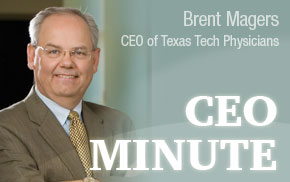 PNC Bank is one of the largest diversified financial services organizations in the
U.S. and is heavily involved in financial matters related to health care. They recently
asked more than 5,000 consumers between ages 21 and 72 for their thoughts about health
care. The results were sorted among four generations: millennials (ages 21-32), Generation
X (ages 33-49), baby boomers (50-71) and seniors (age 72 and older).
PNC Bank is one of the largest diversified financial services organizations in the
U.S. and is heavily involved in financial matters related to health care. They recently
asked more than 5,000 consumers between ages 21 and 72 for their thoughts about health
care. The results were sorted among four generations: millennials (ages 21-32), Generation
X (ages 33-49), baby boomers (50-71) and seniors (age 72 and older).I find the results interesting and believe there are some points in their conclusions that Texas Tech Physicians should consider, particularly its conclusions regarding millennials, the largest generation in the U.S. representing roughly one-third of the population, a group with tremendous and growing purchasing power. Here are some of the key findings about millennials:
• They are perfectly comfortable receiving care in a retail clinic.
• They go to their primary care physicians less often than other generations.
• They depend more heavily on online information to select providers.
• They also rely on online information when selecting insurance.
• They (and Gen-Xers) will forgo care when they perceive it to be too expensive.
How can Texas Tech Physicians use this information to market to millennials?
First, I think we need to concentrate on speedy delivery of services (remember, they like the retail concept) in convenient locations. We need to have the best online tools possible since that is where they get the bulk of their information. Our website needs to be attractive, understandable, functional and up-to-date. Obviously, they are technologically savvy. Our website should be mobile friendly and mobile optimized. It should be easy to navigate, with most information available with one or two clicks. Millennials are social and like to gain advice and referrals from peers. Maybe real testimonials, video tutorials or reviews should be on our website.
Another thing we can learn from this research is we must be prepared to “wheel and deal.” By this, I mean that because millennials want to know the costs of services before undergoing treatments, we have to provide upfront estimates of the patient liability portion in good faith. Our new GE Centricity Patient Liability Estimator function should be helpful in this regard. Price transparency seems to be a big thing with all generations and we see more and more interest in the topic.
Furthermore, we need to explore telemedicine and telehealth options, such as virtual online doctor visits, as we have not done before. I could certainly see millennials connecting to one of our clinics to speak with a provider at any time and from anywhere. One of our DSRIP projects in Pediatrics has a qualified registered nurse answering the phone after hours, backed up by an experienced physician and armed with a computerized and authoritative database of how to follow best-practice guidelines on treatment of the patient. It is not the equivalent of an examination, but it is popular with parents whose children become ill in the middle of the night.
Finally, we need to work on making treatment affordable so millennials and all other groups will seek it. It’s a pretty tall order, but we and other practices ignore the preferences of patients at our own risk.
